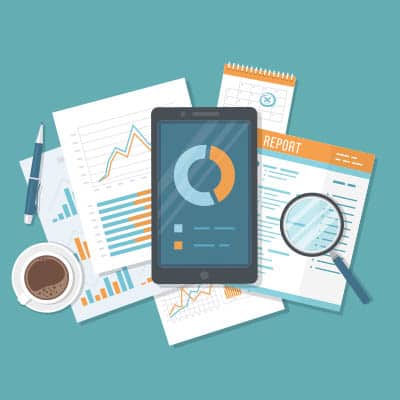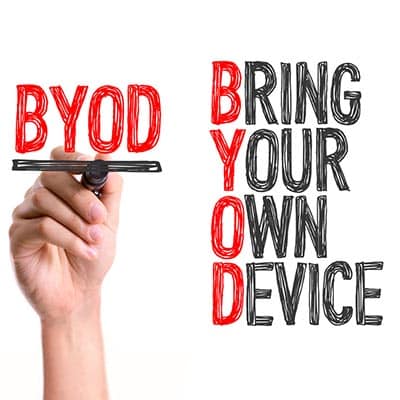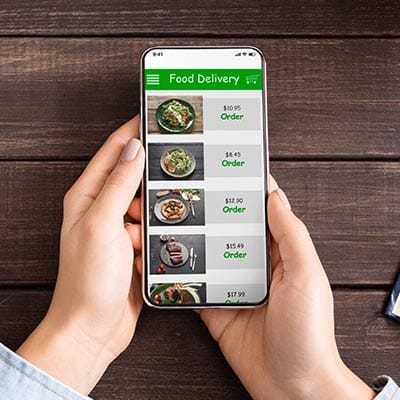Mobile Information Management – How Does It Work? Mobile Information Management keeps sensitive data encrypted. Encryption doesn’t discriminate which mobile platform a user is on. By allowing only approved applications to access information, MIM has proven its value amongst the mobile-equipped workforce. Cybersecurity is not something in which budget should be cut. The risks of having poor security measures in place should not be taken lightly either. MIM benefits businesses of all sizes by securing endpoints, keeping sensitive data only visible by those who it was originally intended to be visible by. Endpoint security plays a critical role in business data exchange. Data interception can result in a devastating outcome if the cybercriminal is experienced. The most dangerous cybercriminals know how to maximize profits and deliver the hardest blow with the wrongfully acquired data. Here Are a Few Ways to Enhance Mobile Security! Mobile data exchange can easily be further secured by practicing some simple, yet effective security tips. These are just a few of the ways to better distance yourself from a ill-willed cybercriminal: Backup can get your business back up and running – Mobile data is constantly being targeted due to mobile information security being more of an afterthought than a priority. The circumstances in which this is accomplished is always changing as the cybercriminals develop more devastating attacks. There are phishing attacks, ransomware, and so many more ways your data can be hacked or compromised. Backing up your data on a regular basis keeps your business up and running in the event a cybercriminal locks your devices while trying to collect data. MIM & MDM Duality – Mobile device management (MDM) controls which data can be viewed, copied, or moved on mobile devices. Limiting capabilities might seem a bit cruel, but it is necessary to secure data. Why should employees who would never need to venture into certain databases have the required access to do so? MDM also allows you to monitor your staff as they use or exchange mobile data. Audit Your Mobile Security – How secure is your data? Finding out the effectiveness of your security which your business has put in place is better done through an audit, rather than falling victim to a data breach. Today’s workforce constantly needs to send or receive data. Don’t let the convenience of mobile data exchange ruin your business. Mobile information doesn’t need to be difficult to secure, it just requires expertise in the field. Our experts at SRS Networks are prepared to help implement business-saving software and security measures. Call us at SRS Networks today.
Communication & Collaboration Solutions This is a no-brainer, simply because you probably need these solutions regardless. If you are going to promote a remote work policy, you need to have solutions in place that will enable teamwork and productivity. Maintaining open lines of communication throughout your organization is critical, which is why using solutions designed for your business’ specific problems is the best path to take. Today there are tools like cloud-based productivity suites and Voice over Internet Protocol that can give your remote staff the tools they need to thrive. The better the tools you provide to promote collaboration, the better your product or service will ultimately be. Project Management Tools Finishing projects on time and on budget can be a pain if it isn’t well coordinated. No place is this more evident than with project managers. They need access to tools that will allow them to oversee all individual contributions and ensure they are working toward a successful end. Today, there are project management tools that integrate dozens of different types of software, instant messaging, and other collaborative tools in one cloud-based platform. By using reliable project management software, you can connect people from all over the world and create something great. Cybersecurity Keeping files safe is becoming harder and harder and costing businesses more than ever before. To ensure that remote workers are doing what they can to protect your business’ resources, they need to adhere to the cybersecurity strategy you’ve put in place. The use of multi-authentication procedures, encryption, and more can go a long way toward keeping business data safe as it comes in from multiple locations. Time-Tracking Software How else are you going to manage to make determinations on whether or not your initiatives are profitable without clear cost management? The only way to do that is to track your employees time. Time tracking also gives you the opportunity to shift priorities on the fly so that the parts of a project, or service tasks get completed by their deadlines. Managing remote workers doesn’t have to be a full-time gig. Get the technology needed to turn your remote employees into profit centers for your business. To learn more call SRS Networks today at (831) 758-3636.
How Can BYOD Manifest Issues?Despite the benefits of BYOD, there are considerable drawbacks that need to be mitigated if you want to maintain an adequate control over your network security. Here are just a few of the drawbacks. Business and Personal Data Shouldn’t MixAn employee that uses a mobile device is almost certainly going to also use it for personal aspects of their lives. With all this in mind, it’s important to remember that combining personal and business data will only result in a further blurring of the lines, particularly in regard to employees that have access to sensitive company data. You need a policy that will help you eliminate the majority of the risk associated with BYOD. Your Business Will Be Vulnerable to More ThreatsA poor-quality BYOD policy will open your business up to a number of threats that could create considerable issues for your organization in the near future. If an employee isn’t careful, they may find themselves exposing devices to unsecured networks or other vulnerabilities. Malware and viruses are also issues that could take root on your organization’s network if they are allowed to sprout. Your Infrastructure Will Need ReworkingYou’ll need to take into account all of the new devices being brought into your infrastructure, which is likely to add more traffic and could potentially create problems as it grows. You’ll need to take this into account when planning out your infrastructure from a BYOD policy standpoint. How to Put Policies in PlaceBYOD needs to be governed by very strict policies. Your employees should need to opt in to your BYOD policy before being allowed to use their devices for work purposes. Here are a couple we like to recommend: Mobile Device Management and Endpoint Protection: This technology allows your business to place a partition between their data and the business’ data, ensuring data privacy for users. If a device is stolen, the business’ data can be safe. Endpoint protection software is also important, as any device accessing your network represents a threat. This software should scan a device and identify if it has been infected. Access Control: Not all employees need access to the same data. Role-based access controls can help an employee access data they need based on their job description and work duties. Some solutions even prevent devices that aren’t up-to-date from accessing a network, forcing users to think twice before accessing the network with out-of-date software or hardware. Exit Strategies and Safeguards: What happens if the devices used by your business are lost or stolen? Do you have ways to cut off access to them? Can you remotely wipe them? You should be able to. Whether it’s an employee leaving your business for good or a hacker stealing the device, you should have the option of remotely wiping the device to prevent data from falling into the wrong hands. SRS Networks can help your business plan for a BYOD policy. To learn more, reach out to us at (831) 758-3636.
Food Delivery Is Not New You know all about the local Chinese restaurant or pizzeria that will get their professionally-made food to you, but why do these services offer at-home delivery, while other restaurants expect people to visit their establishment? Simple, pizzerias and Chinese restaurants offer delivery because of their demand. In other words, they can afford to. As people were more apt to stay at home, namely because of the advent of the television, restaurants, who depend on foot traffic, started seeing that traffic, and therefore their margins wane. Unfortunately, ninety percent of independent restaurants that open close within the first year. Chain restaurants, that typically are franchised from corporations, and offer the same fare in all of their locations regardless of ownership, have a better chance of success, but still only have an average five-year life span. How Technology Got Involved With the razor-thin margins many restaurants operate under, there isn’t a lot of extra capital to pay delivery drivers. Some restaurateurs even believe that it is beneath their establishment to offer delivery. Regardless of what an establishment’s reasoning is for not offering home delivery, the demand for it remains. Savvy entrepreneurs saw the demand (in a $7 billion market) and decided that with people’s dependence on technology that it would be profitable to create new companies that develop mobile apps to order and set up take-out or delivery. Some of today’s most successful food delivery apps include: Seamless Grubhub Doordash Uber Eats As reliance on mobile continues to grow, and with the advent of 5G networks, it won’t be surprising for the technology to become more commonplace. While most of the services are only available in larger markets, these companies have been aggressive at moving the services to new ones. Food Delivery Doesn’t Have to Be Prepared Another trend you are seeing in food delivery, is that grocers are beginning to make available produce, and in some cases complete meal plans, for people using mobile technology. These services hire renowned chefs to come up with recipes that can be searched on an online catalog. People will select which meals/food they want from the catalog and the company will ship it to the recipient. Since the company uses fresh ingredients, orders are shipped immediately in refrigerated containers. Some of the top meal-delivery services include: Plated Sun Basket Martha & Marley Spoon HelloFresh Green Chef Corporation Blue Apron Advances in food delivery have just begun to scratch the service of their value. Have you used an app to get food delivered to your house? What do you think about technology’s role in your dining experiences? Leave your comments below, and return to our blog for more great technology information.
- 1
- 2




